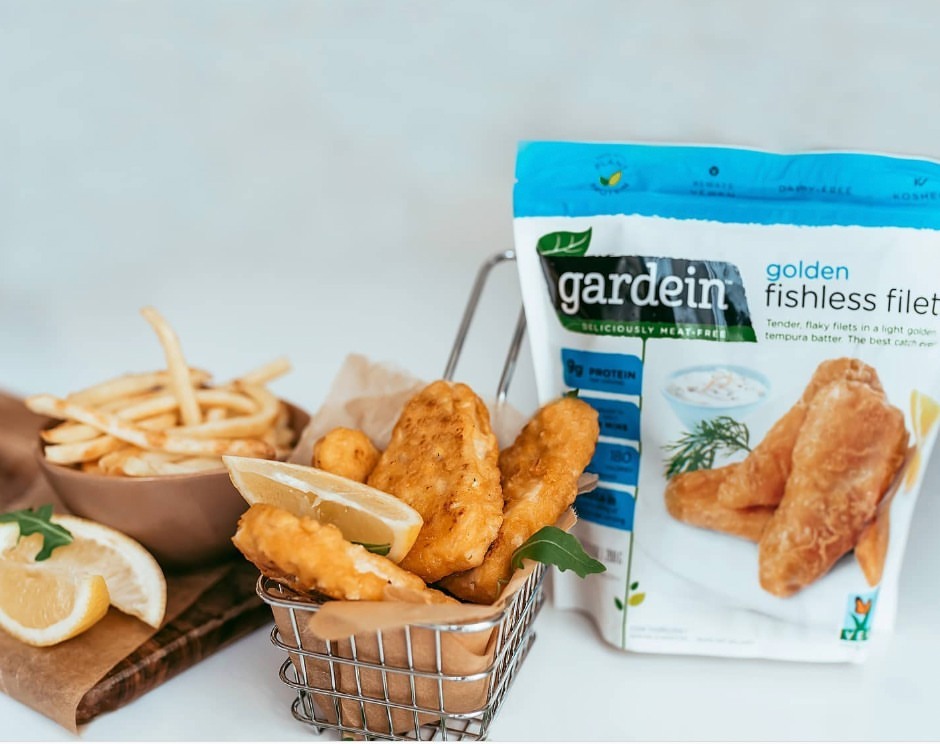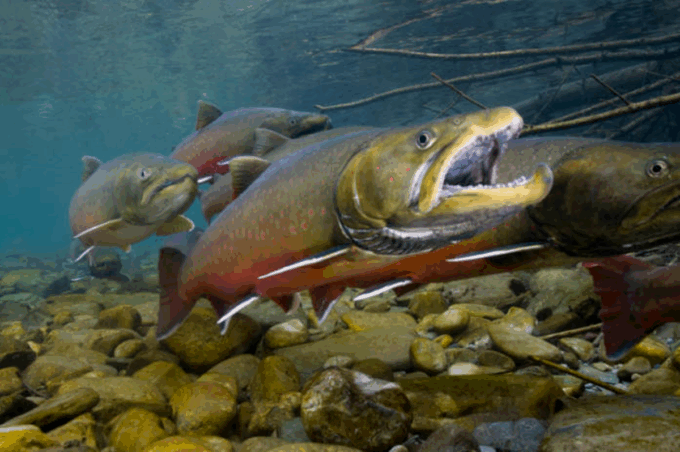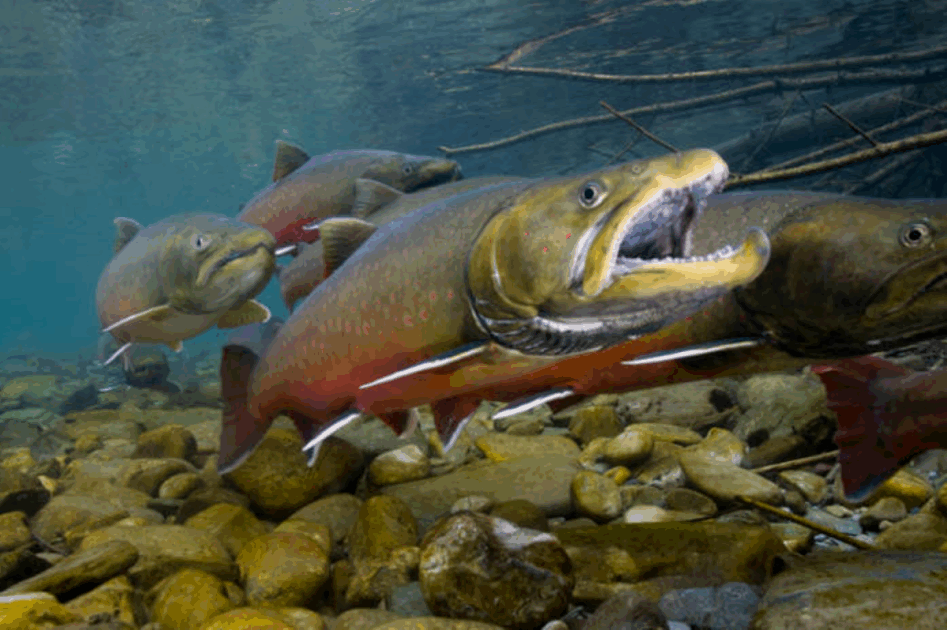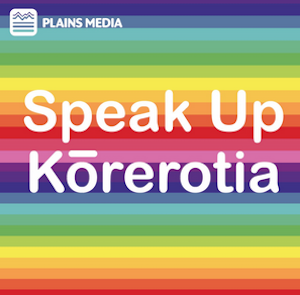by Lauren McGaughy, The Texas Newsroom, and Yilun Cheng, Houston Chronicle
ProPublica is a nonprofit newsroom that investigates abuses of power. Sign up to receive our biggest stories as soon as they’re published.
This article is co-published with The Texas Newsroom, the Houston Chronicle and The Texas Tribune as part of an initiative to report on how power is wielded in Texas.
The devastating flooding in Houston caused by Hurricane Harvey in 2017 killed dozens of people, inundated hundreds of thousands of homes and left the community desperate for a solution.
Since then, local flood experts have extensively studied the possibility of a multibillion-dollar tunnel system across Harris County, where Houston is located. Studies have focused on the construction of pipelines, 30 to 40 feet in diameter, that could ferry massive amounts of water out to the Gulf in the event of a storm.
Now, after years of research and discussion, Elon Musk wants a piece of the project.
An investigation by The Texas Newsroom and the Houston Chronicle has found that the billionaire, in partnership with Houston-area Rep. Wesley Hunt, has spent months aggressively pushing state and local officials to hire Musk’s Boring Co. to build two narrower, 12-foot tunnels around one major watershed. That could be a potentially cheaper, but, at least one expert said, less effective solution to the region’s historic flooding woes.
Hunt’s team has said the Boring project would cost $760 million and involve the company getting 15% of the cost up front from state and local coffers.
Within two months of this push, the Harris County Commissioners Court unanimously voted to study a pilot program that included a look at smaller tunnels, with specifications similar to what Boring had pitched. The commissioners court, made up of five elected members including a county judge, oversees the county’s budget.
Both Musk and Hunt stand to benefit should Boring be selected to build any part of the project. Hunt is reportedly considering a challenge to U.S. Sen. John Cornyn in next year’s Republican Senate primary. And landing a job like this would also be a significant win for Boring, which has not completed a major public project in Texas and faces criticisms for its ventures elsewhere.
The discussions about the Boring pitch have happened mostly out of the public eye. Hunt mentioned the project in passing at a town hall in Houston in February. Since then, he has refused to answer the newsrooms’ questions about when Musk sold him on the idea and why he became its pitchman.
Efforts to reach Musk and representatives with Boring were not returned.
Experts and some local officials question whether Musk and his company are the right pick for the job. The Boring Co. has focused on transportation tunnels, not flood mitigation.
“If you build a smaller tunnel, OK, it’ll be cheaper, but it can carry less water,” said Larry Dunbar, a veteran water resources engineer who has advised Houston-area governmental agencies on drainage issues. “So what have you saved? Have you reduced the flooding upstream by an inch? And are you going to spend multimillions of dollars to do that? Well, maybe that’s not worth it.”
In response to the newsrooms’ questions, state and local officials said no public money has been allocated to Boring. County officials added that they have not chosen a tunnel contractor and any process to do so would follow normal procurement rules.
Lt. Gov. Dan Patrick, whose staff met with Hunt’s team during the legislative session to discuss the proposal, remains open to the idea. As president of the Texas Senate with close ties to President Donald Trump, he is a powerful ally.
“If Elon Musk and the Boring Company, or any other company, can build two massive tunnels under the Houston bayous in a few years to save the city from flooding, I am always going to be interested to listen,” Patrick, a Republican, told the newsrooms. “The truth is, Elon Musk is one of the only people in the world who could accomplish this.”
Then-candidate Wesley Hunt, now a Republican representative, speaks with volunteers before they campaign on his behalf in 2020.
(Mark Mulligan/Houston Chronicle)
The Pitch Process Begins
In 2022, the Harris County Flood Control District released findings from its yearslong tunnel study, which has so far cost nearly $3 million in local and federal funds.
The idea was to build eight tunnels, totalling around 130 miles in length, according to the report. The tunnels would be huge, wide enough for a container ship, and buried 40 to 140 feet underground, depending on the location. Austin and San Antonio have similar systems, although on a smaller scale.
The Buffalo Bayou segment of the Houston project — which Boring has proposed to build — is a centerpiece of the design and would run through the city’s core and some of its most developed neighborhoods. The county estimated it would cost $4.6 billion.
The total cost for the system was projected to be $30 billion, funded by a potential mix of federal, state and local dollars, and the timeline was 10 to 15 years to complete construction.
Given the scope and complexity of the project, the Army Corps of Engineers has been involved in discussions about the tunnels since the beginning. The corps also has jurisdiction over the two federal reservoirs in the area.
Eight years after Harvey, however, the tunnel project has not broken ground.
Hunt has accused the Army Corps of “dragging their feet a little bit” because its study of the tunnel system has been delayed. In December, Congress ordered the Corps to finish the analysis. Hunt hailed the decision, but to date the Army Corps has not completed the study.
Just two months later, however, his staffers and Musk’s team started shopping Boring’s proposal to politicians across the state.
Emails, text messages and policy memos the newsrooms obtained through public records requests show Hunt’s chief of staff, James Kyrkanides, repeatedly attempted to obtain public money on behalf of Boring. The documents, which have not been released previously to the public, also lay out how Hunt worked to secure Musk access to lawmakers and other officials ahead of the formal bidding process.
Kyrkanides declined to comment for this story.
In February, Boring pitched its proposal to elected officials in Harris County as an “innovative and cost-effective solution.”
“We are confident in our ability to execute this project successfully to bring peace of mind to residents of Harris County and the greater Houston area during future flood events,” Jim Fitzgerald, Boring’s global head of business development, wrote in a two-page memo about the proposal addressed to Kyrkanides and shared with local officials.
That same month, Hunt spoke at a town hall meeting about his involvement.
“I talked to him” — Musk — “about Hurricane Harvey and how we need tunnels,” Hunt said, according to Community Impact. “He told me, ‘I can do that at a fraction of the cost the Army Corps of Engineers would do it.’”
A few days later, the head of a local nonprofit wrote to a county commissioner saying she’d heard Hunt and Musk were shopping the proposal around and that the idea may have been discussed on board the president’s jet.
“I hear that Congressman Hunt talked to Elon Musk about his boring company while on a trip on Airforce 1,” Colleen Gilbert, executive director of the Greens Bayou Coalition, emailed.
It’s unclear if Trump was on board or took part in the discussions. The president’s spokespeople didn’t answer questions about the apparent meeting.
In April, Kyrkanides made a detailed pitch in an email to Patrick’s staff. He passed along Boring’s proposal and suggested that $60 million be set aside in the state budget “that will be matched with another $60 million” from the Harris County Flood Control District as a “down payment for the $760 million project Elon pitched Wesley.”
“I believe the Lt. Gov. spoke with Elon and the Boring Company this week,” Kyrkanides emailed in May, a month before the regular legislative session wrapped up. “Wesley also spoke with Elon, and everything seems on track!”
Kyrkanides followed up once more mid-month: “Anything you need from us?”
Pushing for Smaller Tunnels
As they pushed the idea to state lawmakers, Hunt’s team repeatedly lobbied Harris County officials, reaching out to at least two commissioners, the county’s legislative liaison and flood control experts.
Early on, Houston officials had concerns about what Boring proposed.
The two-page letter from Boring said its tunnels would be “no shallower than 15 feet to 30 feet below ground surface,” while the county’s previous research proposed a much deeper range for the Buffalo Bayou segment.
An engineering expert in County Commissioner Tom Ramsey’s office warned that Boring’s shallower plan could interfere with bridge foundations, utility lines and existing easements.
“It discusses that the tunnel would be much shallower then anticipated,” Eric Heppen, Ramsey’s director of engineering, wrote in an email to other staffers in his office on Feb. 17. “I would quickly confirm if it can be deeper or if that becomes a load challenge for the system.”
Boring said in its pitch that the tunnel depth is “flexible,” but the company did not respond to the newsrooms’ question about whether it can build to the standards outlined in the county’s study.
Volume was another concern. A single 40-foot-wide tunnel can move about 12,000 cubic feet of water every second, county studies show. Two 12-foot-wide tunnels, laid side by side, as Boring proposed, might struggle to keep pace in a flood emergency, according to Dunbar, the veteran water resources engineer.
“One would need eleven 12-foot diameter tunnels to provide the same flow capacity as one 40-foot diameter tunnel,” he told the newsrooms. “Providing only two 12-foot diameter tunnels does not provide the flow capacity that Harris County or the Corps of Engineers are seeking.”
Boring Co.’s Proposed Tunnels Would be Narrower and Shallower Than County Plan Calls for
(Sources: Harris County Flood Control District study; Boring Co. tunnel pitch. Graphic: Ken Ellis, Houston Chronicle.)
The county continued to engage with the company despite these concerns.
In March, Scott Elmer, who’s overseen the tunnel study for the past few years at the county’s flood control district, reached out to Boring executives to set up a meeting. In the following weeks, he and other flood control officials met with Boring engineers at least twice to discuss the specifics of Boring’s capabilities.
During one of the meetings, flood control officials pressed Boring representatives on whether the company could build tunnels that are at least 20 feet wide, according to an agenda shared with attendees via email.
The company was reportedly studying how to make tunnels as wide as 21 feet several years ago. But it’s unclear if Boring ever developed that capability or what it told county officials about its potential to make bigger tunnels. On its website, Boring notes it “maintains the same tunnel design for all projects to avoid ‘reinventing the wheel’ for every tunnel.”
An April 10 commissioners court meeting in Houston was a turning point.
That appears to be the first time county officials brought up in public the fact that Hunt had been pitching them on a smaller-scale version of the flood plan they’d studied for years. They referred to this idea as a pilot program that would focus on just a few sections of a larger, countywide tunnel system.
Ramsey, the panel’s only Republican, specifically mentioned the pilot program tunnels could be narrower in diameter, as small as 12 feet, and shallower — specifications that would fit the kind of tunnel Boring has typically built.
Commissioner Lesley Briones, a Democrat, said a pilot project may help kick-start a huge, expensive project that the county has struggled to get off the ground.
No one mentioned Boring or Musk explicitly until Commissioner Rodney Ellis, a Democrat, said he’d gotten wind that the tech billionaire might be involved.
“I’ve heard all of the stories about Elon Musk having a tunneling company,” Ellis said. “I’ve got pretty good ears. I’ve got good Republican friends, too, now.”
He questioned the pitch, saying he was worried it would take the county off track.
However, Ellis and all of the commissioners unanimously voted to produce a white paper studying the idea of a scaled-down pilot project. They also voted to ask the state for flood mitigation funds. The vote didn’t require the county to commit to a specific project.
Later that month, records show the county’s legislative liaison reached out to staff for state Sen. Joan Huffman, a Houston Republican who chairs the Senate Committee on Finance, to indicate the county’s support for a $60 million budget rider for “underground flood risk reduction systems in Harris County.”
A two-page memo explaining the pilot project included with the request did not mention Musk or Boring and still referenced the larger 30- to 40-foot tunnels.
Elon Musk, founder of SpaceX, points to a Texas- and Tesla-themed belt buckle as he answers a question about operating his business in Texas.
(Jon Shapley/Houston Chronicle)
What’s in It for Musk’s Allies
Hunt has been a leading voice on the need for flood mitigation during his short time in Congress.
Last year, he partnered with Democratic U.S. Rep. Lizzie Fletcher to order the Army Corps of Engineers to move forward with the underground tunnel study. The effort was applauded as a bipartisan victory.
But Fletcher, a Democrat, said she was not involved in Hunt’s work with Musk on the Boring proposal and has “not heard from anyone advocating for it.” She said she’s worked with Army Corps of Engineers and local communities “on a transparent, informed, community-driven effort to address water conveyance and flood control in our region.”
A West Point graduate and former Army captain, Hunt has shaped a political brand that appeals to both GOP insiders and MAGA-leaning voters. He was a regular at Trump campaign events in and outside Texas and secured a prime-time speaking slot at the 2024 Republican National Convention. He is the only Black Republican in the Texas congressional delegation.
But if Hunt enters the U.S. Senate race against Cornyn, he will likely need a high-profile political win to stand out, according to Brandon Rottinghaus, a political science professor at the University of Houston, as incumbent senators in Texas have won nearly every primary over the past few decades.
Texas Attorney General Ken Paxton is also challenging Cornyn in the primary.
Given the volatile dynamic between Trump and Musk, aligning with the latter carries political risk but also the potential for major reward, Rottinghaus said.
“Hunt certainly is well-known enough as a member in his district, but the problem is that when you’re in Congress running for a statewide office, your base support can sometimes be very provincial,” Rottinghaus said. “To partner with Musk would provide for a kind of national profile that Hunt would need to be successful.”
Musk has tapped local politicians when pursuing similar big projects elsewhere.
In Tennessee, Republican leaders recently announced that Boring would build a transit tunnel for cars from downtown Nashville to the nearby airport. The city’s mayor and other Democratic leaders have raised questions about a lack of transparency, competitive bidding and environmental planning. At a public meeting in early August, a Boring official said the company would seek public input for the project but did not answer reporters’ questions about why they had not yet done so, according to the Nashville Banner.
In Las Vegas, where Boring built a transit tunnel system, the company was able to avoid many of the lengthy governmental reviews typical of these kinds of projects because it is privately operated and receives no federal funding, ProPublica previously reported.
In 2022, Bloomberg reported the company had pitched eight projects to Texas officials. Two were water drainage projects in Austin and Houston. Neither appears to have been built.
If Boring secures part of the Houston job, it would appear to be the company’s first public flood control project. The company lists only transportation-related projects on its website.
Texas law requires county governments to open large public projects to competitive bidding and give all potential contractors an equal shot under the same conditions.
While the law does not explicitly bar local officials from discussing projects with individual companies ahead of time, that kind of early outreach — though common in some places — hasn’t been expressly authorized by state courts or the attorney general, according to legal guidance from the Texas Municipal League, which provides legal guidance to local government officials.
Emily Woodell, the spokesperson for the Harris County Flood Control District, said the agency has not shared any sensitive information with Boring about the Houston project and only met with the company to understand its capabilities.
Ramsey, the county commissioner, told the newsrooms he believes there’s nothing wrong with officials entertaining private pitches before the formal bidding process begins.
“All companies that might have an interest in it, that might understand and offer us information, certainly we’d be open to listening,” Ramsey said.
What’s Next
The future of the project, and Musk’s involvement, are still up in the air.
The state never granted Boring the $60 million it wanted for the project. Huffman, the senator overseeing the finance committee, confirmed the rider was never placed in the state budget and told the newsrooms she had nothing to do with the proposal.
“The only involvement my office had with this proposal was when Rep. Hunt’s chief of staff reached out to my scheduler to arrange a meeting between Rep. Hunt and me, but it never took place,” she said in a statement.
County officials also told the newsrooms that they haven’t provided any public money to Musk.
However, in June, the Harris County Flood Control District produced the pilot project report that commissioners voted for in the spring, looking at a scaled-back version of the original tunnel design. This white paper proposed focusing on only a few segments of the countywide tunnel system and considered tunnels as small as 10 feet in diameter as a real option — well within Boring’s ability to construct.
The white paper also floated the idea of a public-private partnership allowing a private firm to design, build and even run the system afterward, just as Boring has done elsewhere.
It does not appear that this report has been released to the public. The flood control district provided it to the newsrooms upon request.
Carlos Gomez, acting public affairs chief for the Army Corps of Engineers’ Galveston District, told the newsrooms he had not heard about the pilot project potentially involving The Boring Co. and could not say if his agency would be interested.
After the newsrooms presented them with the findings of this investigation, Briones and Ramsey emphasized they are not committed to one particular company and that all solutions would be subject to due diligence. Ellis told the newsrooms that Musk should not be involved, calling him “someone who has shown blatant disregard for democratic institutions and environmental protections.”
Harris County Judge Lina Hidalgo and Commissioner Adrian Garcia, both Democrats, declined to comment.
Woodell, with the flood control district, said there have been no further discussions with Boring in months. She said the county has looked at smaller tunnels before but acknowledged that engineering analyses found large-diameter tunnels would be the most effective option for a countywide system. Woodell added the county might still consider smaller tunnels in “specific locations.”
“There will never be a single solution to flooding in Harris County,” she said.
If Harris County moves forward with a smaller-scale project like the one Hunt wants, which doesn’t rely on federal funding, the process to design and build it could still take up to a decade.
Jim Blackburn, co-director of Rice University’s Severe Storm Prediction, Education and Evacuation from Disasters Center, said Musk’s slimmer tunnels might still prove useful. But he warned against handing a project of this magnitude to a private company without proper vetting.
“The scale of the problem we have really demands, I think, all of us to be open-minded about ideas,” Blackburn told the newsrooms. “Invite them in. Just don’t give them the contract tomorrow.”
Lauren McGaughy is an investigative reporter and editor with The Texas Newsroom, a collaboration among NPR and the public radio stations in Texas. She is based at KUT News in Austin. Reach her at lmcgaughy@kut.org. Yilun Cheng is an investigative reporter with the Houston Chronicle. Reach her at yilun.cheng@houstonchronicle.com.
This post was originally published on ProPublica.

 Pexels
Pexels Pexels
Pexels Gardein
Gardein








